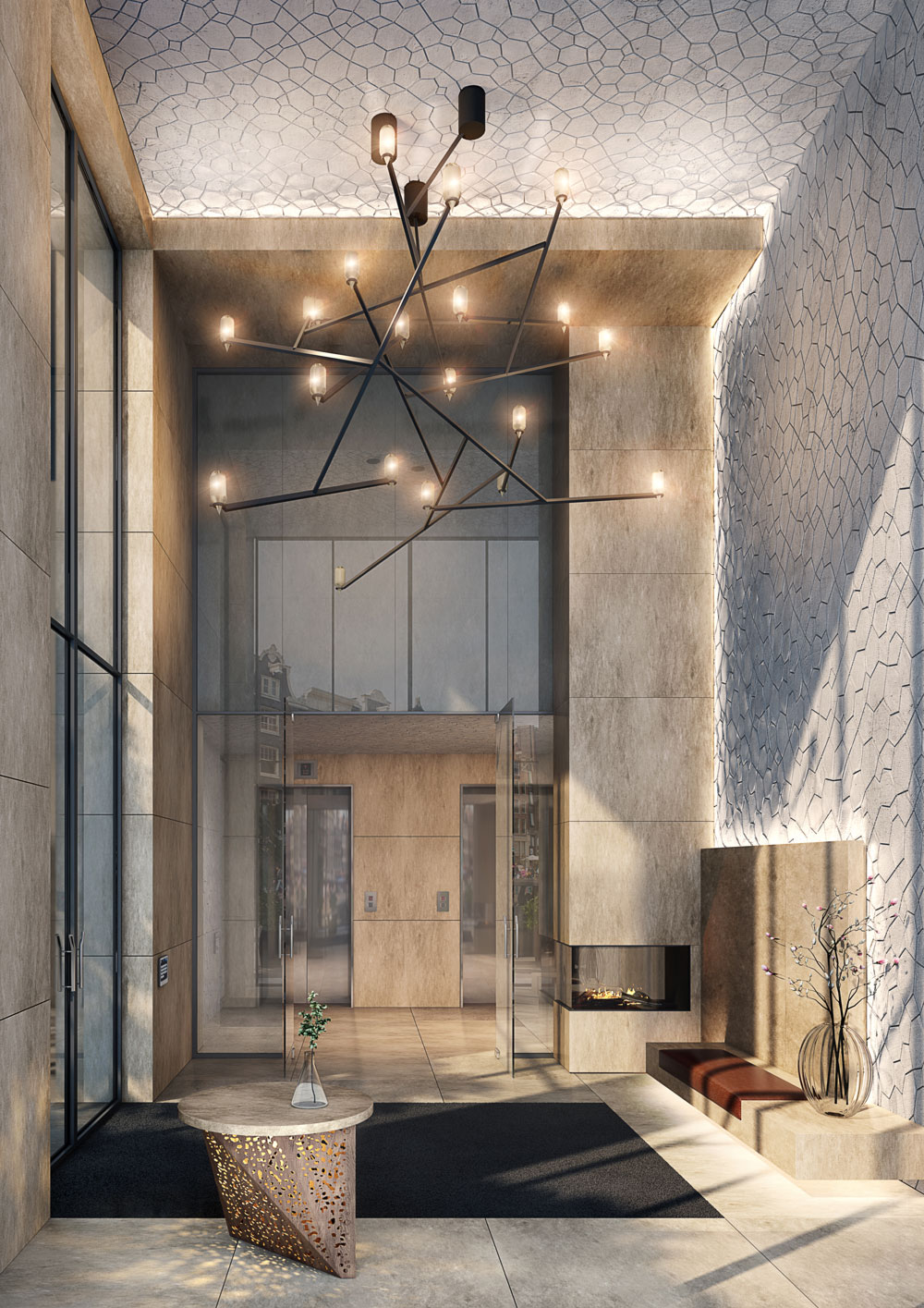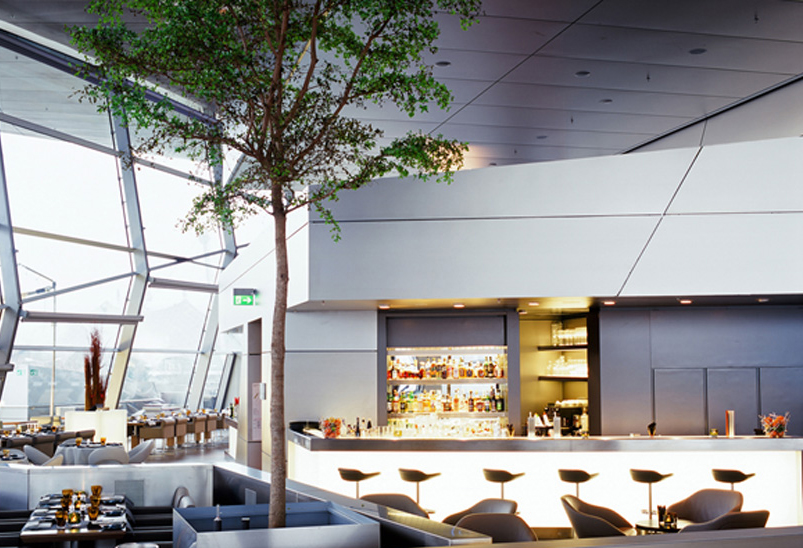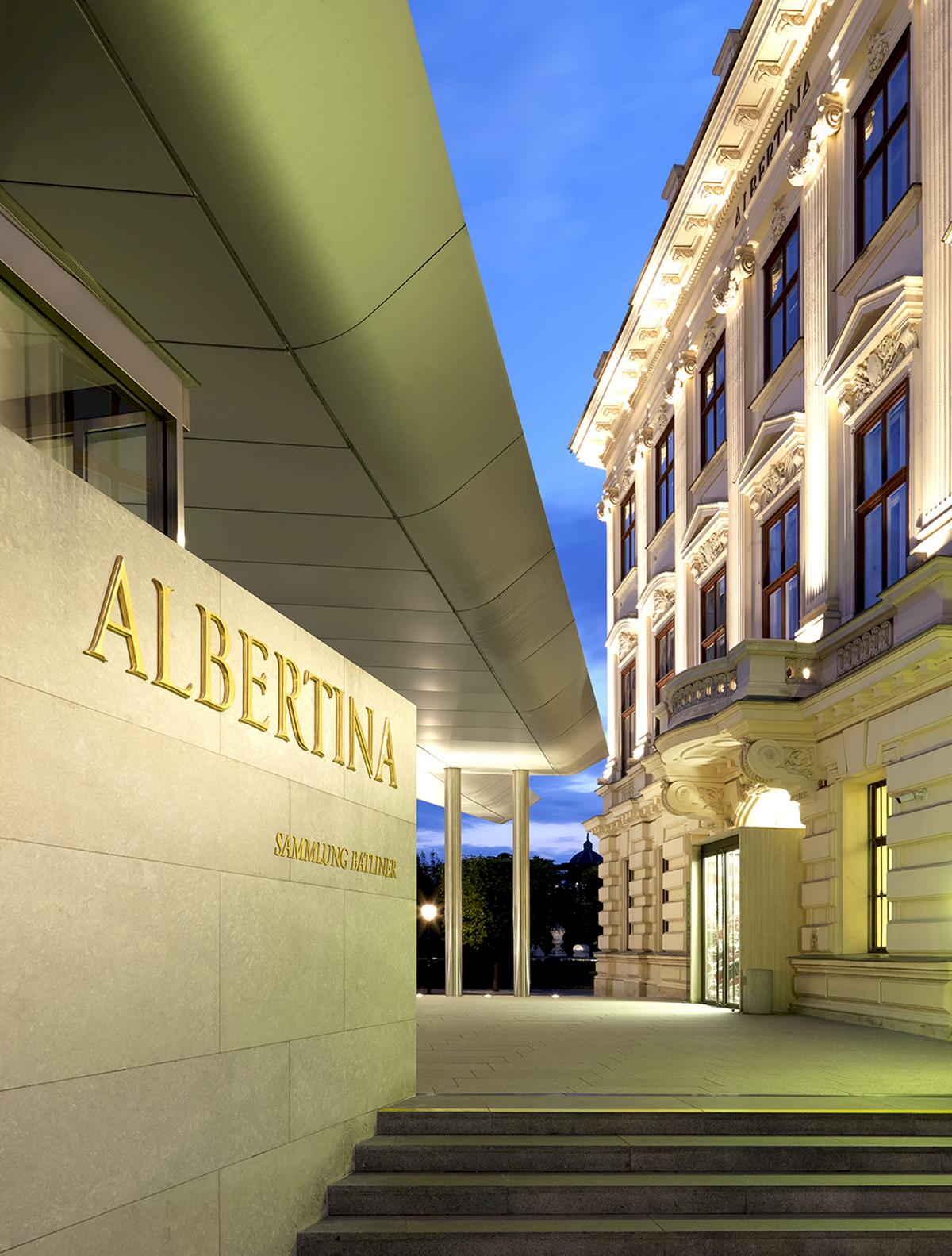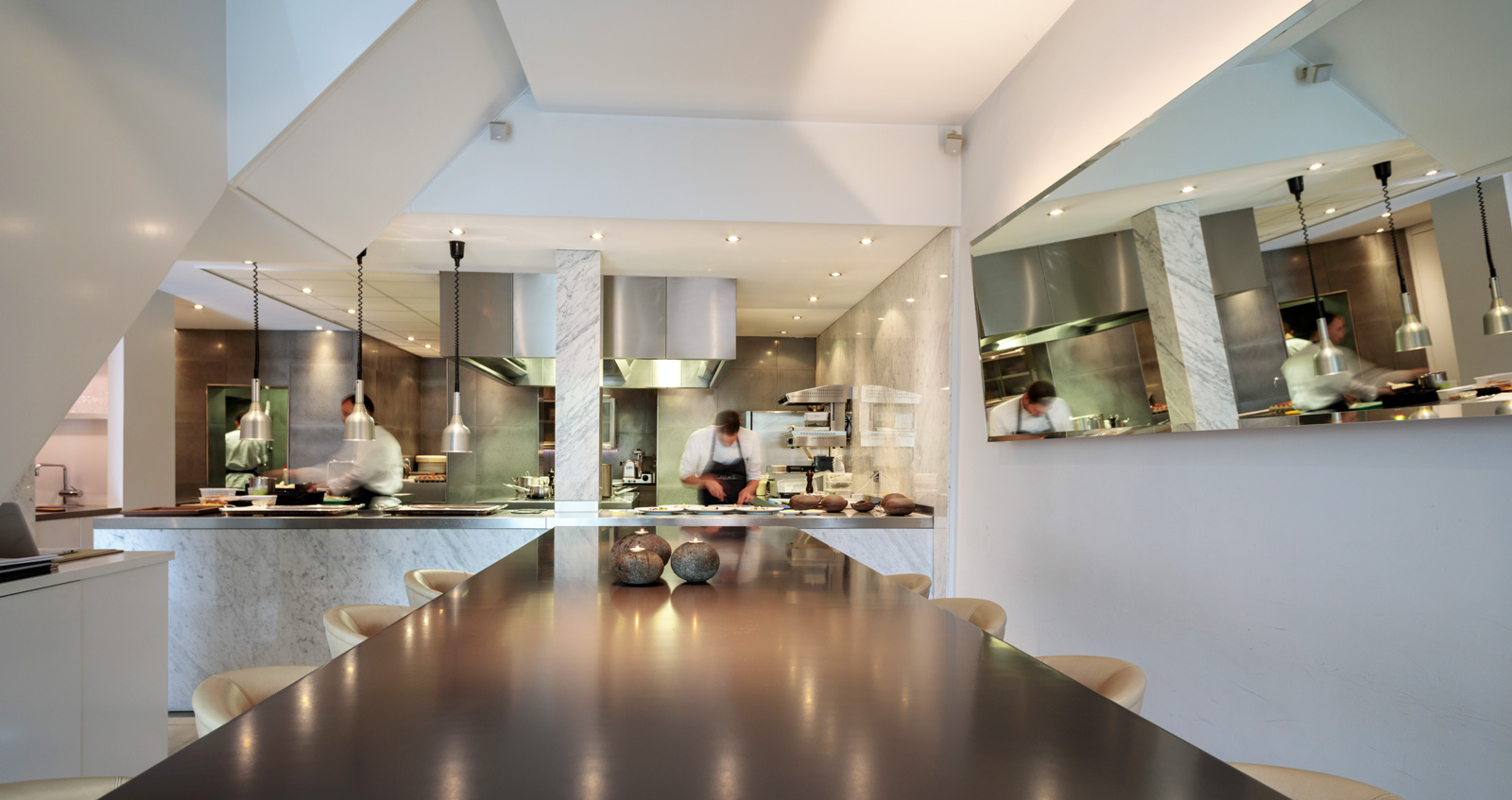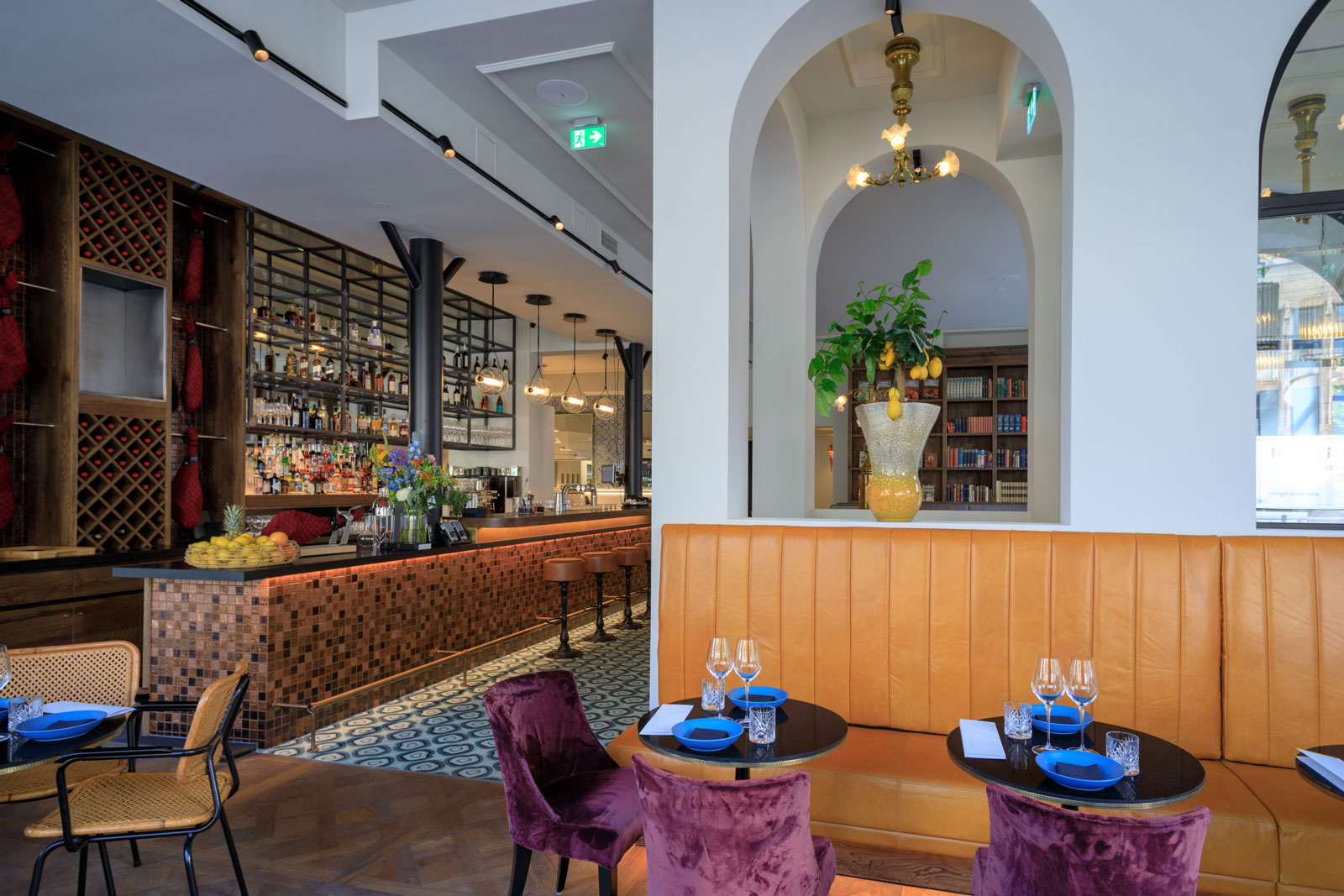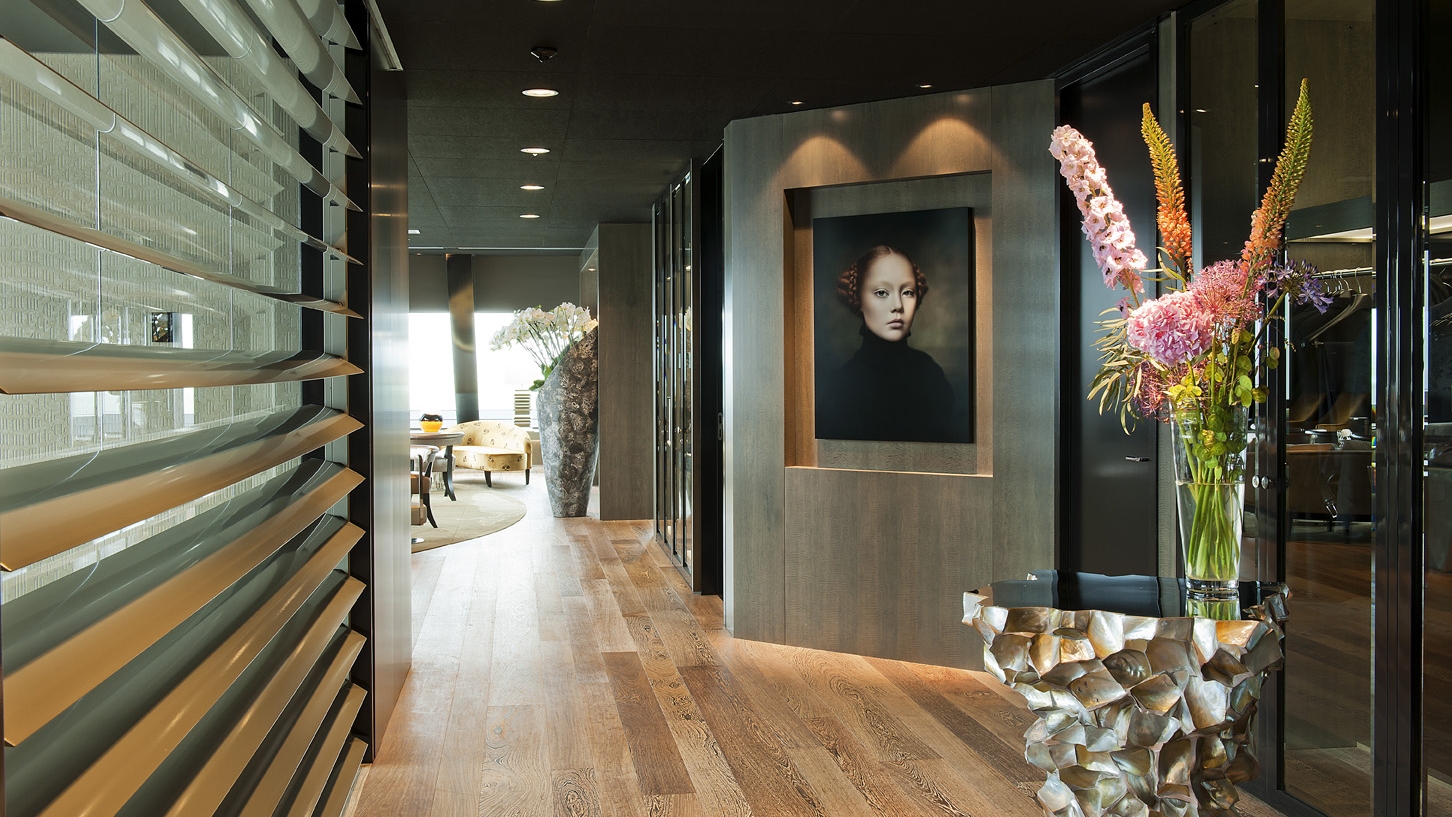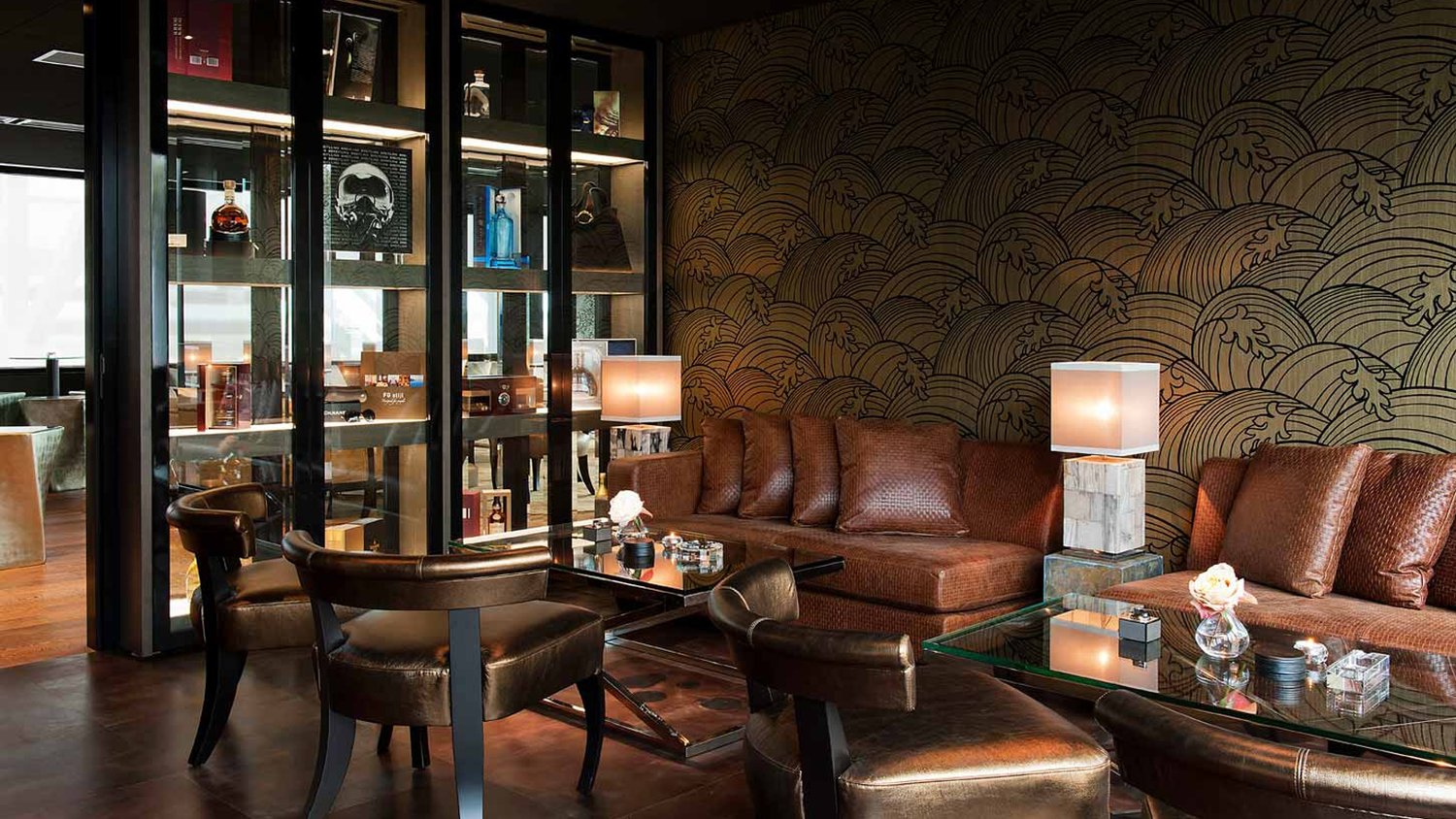Future Hospitality
podcast
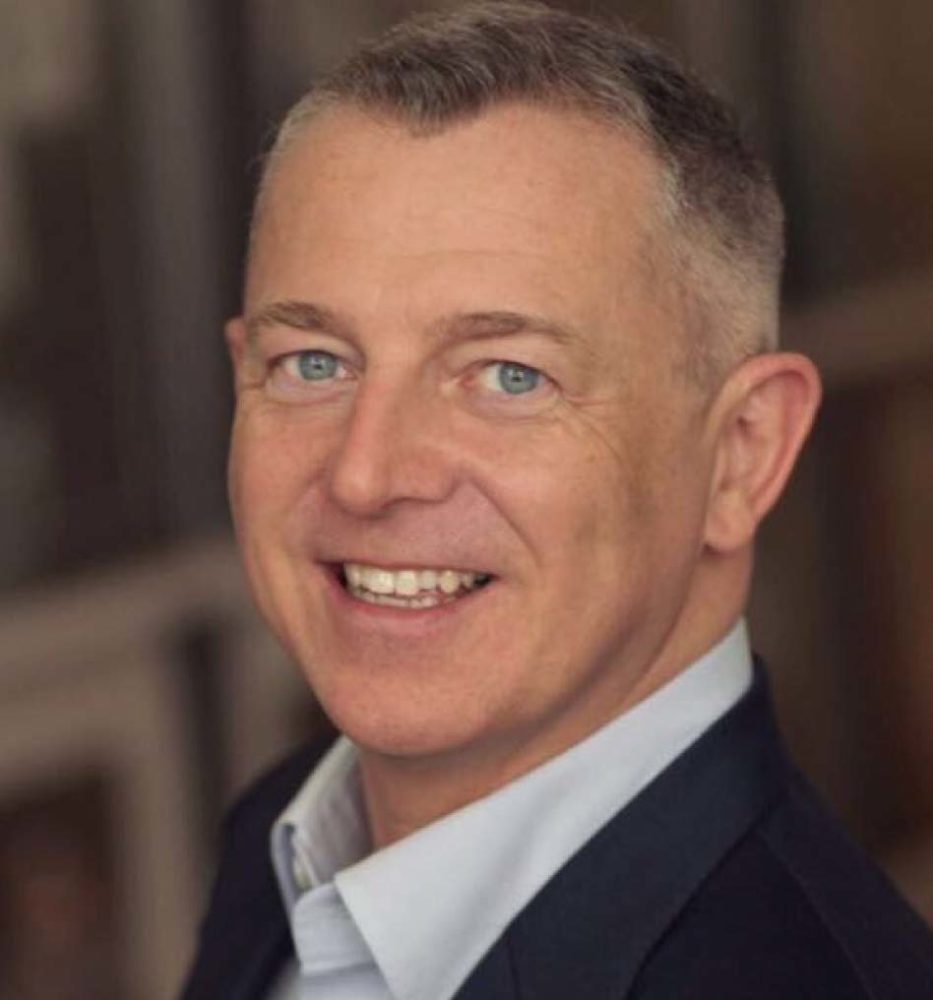
#10: The Future of Responsible & Sustainable Design: Colin Finnegan
August 6, 2020
Dustin Myers: Thank you so much Colin for joining us today.
Colin Finnegan: My great pleasure. It’s a pleasure to be here.
Dustin Myers: Well, we have seen your work across the globe and just really impressive portfolio. You can tell that there’s a lot of thought and intentionality behind the work that you guys are doing. So we are excited to talk to you and kind of dig deeper into your philosophy and where you’re at as an agency. So maybe just for those who aren’t familiar with your company, could you give us a little insight into your story, what you guys do and how you came about?
Colin Finnegan: Yeah, of course. I’ve had the company [FG Stijl] now, based in the Netherlands, for the last 25 years. That’s really quite a time. But personally, I was trained as an interior architect in England and at the time I also studied interior architecture, but also Egyptology in the evening. And actually it’s very funny because I was always fascinated with the story and the power of buildings. And then when studying Egyptology, I did find out that some of the greatest buildings in the world’s most memorable building and walls were built to 4,000 or 5,000 years ago and actually what happened is that the object is so strong that they could leave them for 4,000 or 5,000 years and then still to this day, these are some of the most beautiful buildings we have on this planet.
…You should start with a great basis. It’s really the bone structure, which is the key to all design.
Colin Finnegan
So the way I always think is you should start with a great basis. It’s really the bone structure, which is the key to all design. If you design well really as a blank canvas and just think about the proportions of a building, their routine, how people will be moving from A to B. So this is really the essence of my company. So even the way I decided to call the company FG Stijl was really based on the Dutch Art Movement, De Stijl, from the beginning of the last century where you had the great artists of Piet Mondrian, Theo van Doesburg who really went from figurative painters in their youth. And then actually as they got older, they were becoming more abstract, but actually they were always figurative painters even the most abstract work of Mondrian. It has the basis of something figurative inside, and this is what I try and do, but then in reverse.
So I start off with the pure lines, the absolute essential directions, the essential positioning of all elements. And then on top of that, we try and add a style because the style of course is something which can change, but a very well laid out floor plan, if you do it really well, can actually go for generations. And this is for me one of the most important things in all of our projects. We want to have a different style for each project, a different look, a different feeling, but the logic behind the scenes, should we say working in the back of the house and in the front of house should always be the same. It should be completely logical. The back and the front house should always flow together.
So really in the last 25 years, this is really what I’ve been working with all the different restaurants we’ve designed, we’ve worked with some of the greatest chefs in the world. From one star or three-star chefs, often they were the owners of the restaurant, which of course when it’s your own money in a restaurant, it becomes extremely personal. So really working with these people and then telling us the essence for the great restaurants of the world is actually the table and the clients sitting, the guests at the table. And that is actually the center of the world. Because when you go to a restaurant when you’re sitting, it is you and your partner, or your friends around the table, which really is the center of the world. And they say it has to grow from this nucleus and then you create a surrounding. So this is really my personal philosophy of design to really create something, which can last a huge amount of time. You should renovate because you want to give something new to your clients, not because you have to change the style. So it’s just always layering.
So I think in the last 25 years with the restaurants, we design also the hotels. We were really designed from boutique hotels. Actually the last one we completed was in Edinburgh, The Market Street Hotel, which is actually the last block in the Edinburgh Castle Wall, which is a UNESCO Heritage Site, which is very, very contemporary, but very much based in the heart of Edinburgh. And then completely opposite to that is a hotel, the Andaz Hotel on the Palm Jumeirah, which is of course a very 21st century hotel lying in the heart of the Palm Jumeirah, but that is actually the combination of the Arabic influence, beautiful contemporary Arabic art, and a 21st-century cityscape, because of course in Dubai, the entire city has been planned as one. So each individual building is actually all part of a collage. So actually from the Andaz, you have the most beautiful combinations of the Burj Khalifa, the Burj Al Arab lined up from the swimming pool and then the swimming pool we created actually with a beautiful Arabic patent on the floor, but it’s an outside pool on the 16th floor.
So this is really that Google Planet Story of the entire world, Google Planets, the Palm Jumeirah. And I thought if you were in the center of the Palm and have fun, when you’re zooming in that you think, “Whoa! What’s happening on the right-hand side? What are those colors? What are those patterns?” And then you zoom in to them and then you get this beautiful Arabic pattern in the pool, contemporary Arabic pattern and then you know where you are in the world. So these are sort of the fun factors to really make it something local and hopefully very profitable for the owners. Actually, our projects are extremely profitable for all of the different owners, which makes me very proud because at the end of the day, it has to be profitable, to invest money is one thing, but to get a lot of money back, of course helps with the investment, and it gives us actually more freedom because people really know that the room rate is actually higher, which is at the end of the day, the reason that all of these investors actually build these hotels, which is not a bad thing.
Jeremy Wells: That’s a really fascinating look into your past and kind of where you’ve come from and kind of your philosophy of design and how you run your agency. It’s really interesting. I’d love to hear, you mentioned, obviously you guys have been around for 25 years now, over that. What was those first few years like? Do you remember what the challenges you face within the first three to five years? Do you even remember like the first project you worked on or any interesting stories to tell?
Colin Finnegan: Oh, absolutely, absolutely. When I first moved to Amsterdam, I was, of course, very young. I happened to have that much experience. It’s a great learning curve. For the first five years, I worked for other people, different architects, officers, restoration architects’ offices, of course, Amsterdam is an ancient city. So you learn a lot about restoration and really the essence, if you look at the canal houses. Within the canal house, the historical society would actually say that there are certain beams, wooden beams which are of historical importance.
So if you were stripping one of these buildings, they would say, “Okay, there are several beams within the building, because of the certain size, have historical worth. The rest you can take away because they’re rotten or whatever. But these things are some of the essences of the city.” And this is I think so fantastic because very few people will actually see that beam we’re talking about, but the building retains the history of its origin. And this has also been one of my key things of trying to create things which really in years to come, people will look back and think, “Oh gosh, that’s a very beautiful piece of artisan skill within this project.” So we want to keep that or we want to reuse it or we want to move it to a different location, to sell it, auction it, whatever, give it away, but not throw it away. I think to design things, which are at a certain stage are thrown away is really for me is impossible.
I think we have to together work to create a society where each individual object you own you want to own.
Colin Finnegan
I think we have to together work to create a society where each individual object you own you want to own. Not you thinking, “Oh, no, let’s take it to anyway.” All those things, you just take anyway. You have no emotional attachments to whatsoever. But in your home, if everything you bring into your home you really want to have it, okay, we need a bed, of course, it’s nice to have maybe a kitchen and a bathroom. But for the rest, everything else is luxury. The chair you sit on, the sofa you sit on, the table you eat on, these are actually nice to have elements. But each element, if you think about it very carefully and then you can look for on auction sites or in second-hand shops, but you find the things which have been built with quality and good materials, which will last for a long time. And this I think working with the restoration architect, that’s where I learned probably the most about respect for the past and also building with quality.
If you build with quality, like if you’re building a brick, brick buildings, people have some sort of inner emotional attachment to. Brick buildings are not often demolished. Not that quickly anyway. If you have a glass facade building, boom, it’s gone. Nobody has much emotional attachments to glass. And I think through working with restoration architects, I really learned this. So probably that was one of my greatest things for learning curve. And also I worked for an organic architectural office, Alberts & Van Huut, one of the greater architects of the Netherlands and their philosophy is all based around nature.
So even within the design practice, there were only certain degrees you could use while drawing and all of the degrees that you were allowed to use were all based around nature because in nature, there are no straight lines. Everything has a curve. Everything has a slight degree to it. And then for the first I think probably about two weeks when I was in their office, they said, “Okay, Colin, you have to go into the garden. You have to draw the leaves. You have to draw the environment because these are the things we would like you to bring into these projects.” And so I was working with the team, of course, on a very large office building, it was half a kilometer long, but all lines, there were no straight lines within the building. The way we were creating these offices, at the end, it almost felt like a medieval city because you have the corridors. There are no straight corridors.
So all the walls were going off to different angles. And actually you’d create somehow by only moving the corridor or walls, you would create communities within this vast office building and then you see it’s not so difficult to create a feeling of community, but you really have to think about it. You have to design, not just aesthetically. Of course, it has to be beautiful. But the key thing is you have to design for people. You really have to see people as the center of the entire world when thinking of creating anything. Should we say an office? Although offices are also changing very rapidly, especially now. You want to bring people together. It should be like a village. Sometimes you need to go to the bakers or sometimes you need to go to a different type of shop or you’d like to go to a park. All of these things, you can actually bring into an office building. And this is a philosophy I really try and use throughout all of our projects to really create a sense of wellbeing for the guests and also some sort of ownership. So they have some sort of attachment to the elements that we create within the space. And that’s why I love to use artisans.
I think anything which has been created by an artisan or an artist always brings a completely different ambience and feeling of completeness to all buildings.
Colin Finnegan
Dustin Myers: Yeah, that’s really interesting. I think a lot of design today is made to be disposable or temporary. So I love the mindset behind creating things that last and using artisans and things that people would never want to throw away or things that really matter to people. What are some examples of just design work that you’ve done, whether on a large scale or a small scale of utilizing these artisans and handcrafted things that you believe are really going to stand the test of time and impact people for a long time?
Colin Finnegan: Oh, yes, absolutely. Well, I think I can have many, many I should say with you, but some of the more iconic elements, should we say, I think was probably working on the Park Hyatt Vienna. The Park Hyatt was really created as the new center of luxury in Vienna, because it is actually on the Am Hof, which is the old Roman Square of Vienna. But 10 years ago, when we completed the project, it was a little bit just slightly out of the way. You know how it goes in cities. So you have the main square, which leads in Vienna then to the palace. But this was to the right-hand side instead of the left. And the SIGNA Group, the owners, said, “Okay, we’ve bought several buildings in this square. We want to direct the center of luxury to the right, towards the, the Am Hof.” So they asked us to renovate a former bank of Austria and convert it into the Park Hyatt Vienna, and also to help create an ambiance that the leading retailers of the world would also want to rent from the same owners. Very clever people. It’s not bad to earn money. But you can only convince the great brands of the world, Louis Vuitton, Chanel, Dior, I think 30 of the top brands of the world are now around the Park Hyatt because of the quality they were investing in and the way we really try to analyze the Am Hof, the old bank of Austria building was to look, first of all, at the location of the building. And as I was saying because it’s a square, from the Roman times.
So we were looking at the history of that. And then of course, into the building, it’s the old gold reserve of the Austria-Hungarian Empire. So there were two gold vaults on top of each other, underneath the Park Hyatt. And they said to me, “You know, Colin, there’s probably a Roman general buried underneath this building. And if we dig down for the swimming pool, then we’ll probably have to stop building for a year while the historical society come in and dig away everything.” My first reaction is, “Okay, we’re not going to do that. Let’s take out the floor, one floor of the gold vault,” which you can imagine, which is incredibly thick. But by doing that, we could create the swimming pool into in the old gold vaults. We actually removed four massive doors, bank vault doors. We had three removed and I had one moved, minus one, and then turned around. Just because you could see the golden center of this whole mechanics within the door, but then we’re also looking there the history of Vienna, golden period of Vienna was a hundred years ago, the whole session’s movement, which is a truly golden age of Vienna.
And there were very beautiful, small brooches made to this period by Hoffman and many of the artists, which are in the museums mainly in Vienna and we took this also as part of our decoration element for each room and we said, “This site is so important. We need to bring back the elegance and the refinements of the whole sessions period of the end of the golden age of Vienna. So we have these tiny brooches of only maybe three or four centimeters diameter. We had them made in India by the really most stunning craftsmen into panels on the wall, which is sort of I think about 1 meter 40, 1 meter 60 high, in some cases, inlaid with semiprecious stones. But really for me, it was not a copy because it was an artisan was recreating the work of an artisan using the best materials, the best skills they could possibly put into their work and these true jewels, never will they be thrown onto the scrapheap. They will always go somewhere, even if they moved out to the Park Hyatt, they will go into people’s homes or wherever, but this is built forever. And I think that’s a wonderful thing about jewelry.
Jewelry is one of those small things. So if you think about a ring, maybe a ring from your grandmother, it doesn’t mean it has to be most expensive ring in the world, but that ring has such huge sentimental impact for you and for your family that the worth of the ring itself is completely unimportant, but it’s just the sentimental worth of something and it’s because not only was it a relation of yours because the craftsmanship which has gone into it. And that’s also why I liked in the Park Hyatt Vienna to use that piece of jewelry to really create a connection with the past.
So I think that’s maybe a little bit of a long story, but I think for me that was one of the things that I think we had created, 140 of these masterpieces of sales myth, which are now for the enjoyment of all people staying in every room.
Jeremy Wells: Hearing you tell that story and then a you’re telling us all that, I was looking through the photos of the Park Hyatt and it’s just all inspiring. The design is absolutely beautiful and it’s really neat to hear that backstory of that too, of how you approach that. And I love the thinking, and even as we talked prior to our interview now, I remember you saying the term the new antiques of the future and you continue to say, “Artisan work is never going to be thrown away.” And I think that that leaves to, and I think you even mentioned it, the topic of sustainability and how that can help our communities and our world old. As you’ve said before, I think it’s kind of the designers are responsible to create these locations and these spaces that are forward thinking in that manner. How do you think the role and emphasis of sustainability will continue to evolve and continue to push boundaries for the industry and into the future?
Colin Finnegan: I think we actually, we are now entering a new golden age, if you ask me. I think with this whole COVID period we’re going through is for mankind a moment where we have a very good slap in the face, which we all needed, that we now understand that our world, our environment is also part of us and we cannot say, “Oh yeah, I liked green, the color.” No. We have to like green, which is this planet earth. And I think what’s now I should think and I hope I will definitely work for it myself is to work with people to really see how we can become a little more pure. So far, what’s happening in the world, you see, already you see this more and more that the world’s population are starting to plant trees. Millions and millions of trees are now being planted around the world, and this is a complete opposite to the way we’re thinking the world is going. Of course, we have very unfortunate moments in time of what’s happening in the Amazon in Brazil, which I am sure, I’m convinced people will stop destroying our own oxygen, should we say, and start to restore it because we can. We can do this. I’m sure we can, but we need to think about sustainability in all things.
In all of our countries, there are so many things we can do by using simply natural materials.
Colin Finnegan
In all of our countries, there are so many things we can do by using simply natural materials. If you use a beautiful piece of wood, which is a local indigenous wood from whichever country you’re in and if you know that it’s being taken from a forest, which is actually a managed forest. So for all the trees that you’ve taken away, more trees will be planted for each one taken away. You’re actually actively helping to green this world. And I think if we all just think more in this direction of what is already around you, what can we use or what can we reuse. I’m moving my office now here in Amsterdam to, should we say, a bit of an up and coming area. It used to be the center where they had the Hell’s Angels are prisoned. So until about five years ago, a place you don’t literally only be found dead in, but now it’s just along the Amstel River. So they’ve taken all of that away. They’ve demolished these. There were five or six prison towers, all made of concrete, but the concrete itself is now being pulverized and use as part of the foundations and building material of all of the new buildings and the center is all also completely being built around sustainability, about creating a green future. All roofs will be greened. But how nice to have green roofs to look on? Well, how nice that you can then, in your building, you have a green garden on the roof instead of just asphalt or just a pitched roof?
So I think we are all responsible for our own environments and we have to promote this more. But also think what is pure, what can you make of pure materials? One of my absolute favorite materials is a mother of pearl because when you say mother of pearl, most people are a little shock. “Oh, mother of pearl. It’s so expensive.” But is that green? Is it sustainable? In the world, there are a lot of shells. The shells are of course from the oysters, from all of these shellfish. Once the shellfish are either they die in the sea or they’re eaten by mankind, because we do need to eat, almost always the shells are then thrown away. But if you have an artisan and the artisan takes a hold of one of these shells and expertly cuts it and polishes it, then the mother of pearl itself becomes a true jewel, although actually completely worthless.
Once the artisan has started to work with it, it becomes one of those instantly recognized elements that everybody in the world thinks as superb, that you say mother of pearl I think anybody or any show mother of pearl to anybody in the world and they would always see it as one of the most beautiful materials on earth. And we use mother of pearl quite regularly, first and foremost, because I think it’s beautiful. It’s completely natural. And to get to something made of it, you need to really work with a great skilled artisan. So in this way, you can really use natural materials, helping artisans to create beauty for us all to enjoy. So I would say, yeah, look around you, there are a lot of very beautiful materials if you just look carefully.
Dustin Myers: Yeah. That’s a really cool outlook and a way of working.
Colin Finnegan: Thank you.
Dustin Myers: So I think as you alluded to, the pandemic is ushered in kind of a new phase, a new age. What do you think we should be looking for in the future of the hospitality industry in the post-pandemic world?
Colin Finnegan: I think everybody will be going very close by on holiday. I think that’s the first and foremost. For a couple of years, at least, you are thinking, most people in this world are thinking, “I’d really like to go on holiday,” which is very normal for everybody. But instead of saying, “Okay, I want to go to as far away as possible to go to a beach,” they are looking around and thinking, “Oh, you know, actually, if I get to my car or a bus or a train,” preferably for me, I love trains, and I travel a few hours then, should we say, I’m in Amsterdam. So it’s very central, it’s a very small country, of course, but it’s centrally located within Europe. And if I jump on a train within five hours, I’ve covered half of Europe in all directions. So if you want to go to a very beautiful empty beach, there are lots to find. You don’t have to get on a plane for 18 hours.
So I think it’s going to be a moment when the world discovers there are a lot of very beautiful places to see very close by. And I think also in America, if you look around, have such a huge country with such a diverse nature, you don’t have to travel to the other side of the world to see nature. Nature is all around us. People get into a habit very easily. “Oh, I always go there on holiday.” Okay. This year, maybe not always, to, I don’t know, like Thailand is not going to happen, unfortunate for Thailand, of course, but there are always winners and losers in all these things, but we will get through this period. But hopefully, a lot of people in this world are now going to look around. But if I travel now for an hour or half an hour even, what are the cities and places around? And I think we’ll get a lot more attached to our own neighbors, which is also good. It’s good to have good neighbors.
So I think that for travel wise, that’s really for me, looking into the future is actually becoming more local to know your own neighborhood a little bit more, which I think is a very good thing. I think this is one of the very positive things which would come out of this whole COVID period.
Jeremy Wells: Definitely. Yeah, I a hundred percent agree with everything you said. We’re even seeing here in America definitely the domestic travel kind of leading the recovery so far. So I think it’s going to definitely continue for the foreseeable future. Kind of just asking you personally, you kind of just talked about like what you think the future of hospitality will hold and what things will impact that. Being in this industry for the last 25 years, you’ve seen a lot, you’ve seen a lot of trends come and go. Looking forward to the next 25 years, what excites you personally? What sort of personal things are you looking forward to exploring or learning about? What excites you about the future?
Colin Finnegan: Oh yeah. No, I think really I absolutely firmly believe this. I think we are living in the new golden age and we have a lot to be grateful for. Actually both my grandparents were in the Second World War, both actually survived. One set of grandparents were in a pub in England and a bomb came through five stories and went into the basement. They were in the basement with everybody else who were in the pub and the waiter said, “Ladies and gentlemen, I think we should adjourn to outside.” And I think you have to enjoy life because life is very short. Your moment is very short and we should simply get out there. Enjoy it. There’s a lot to see. People are wonderful. We’re all the same, but slightly different. And I think for me, it’s the slight differences, which make everything so much more interesting because you would not travel anywhere if it was exactly the same as where you are now. Why would you? It’s the same.
So it’s the individuality of all peoples and all locations. So the essence I think of our society, I think, and I firmly believe that people are really waking up to the differences, also to celebrate the differences in mankind. So we no longer all want to be one type of person. We all want to be individuals as we are and to celebrate our individuality, but within the safety of should we say these great continents, you in America, we in Europe, the people in South America, they see themselves or China as well. It is one mass of people, but still there is individuality and we have to celebrate the individuality more.
I was reading a report that in Europe now, more local indigenous languages are being spoken daily than for the last 50 years and I think this is because people are feeling more safer to be individual because of the group of countries that are now should we say protected together with, and I think that’s a very good sign. In the United Kingdom, there’s more Welsh being spoken than ever, in Ireland as well and in Scotland. So all of the local even I think in Cornwall, really the local languages are really flourishing and they’re flourishing because people feel protected and they’re allowed to be individual and that’s really good.
Dustin Myers: Well, Colin, we love your optimism, your outlook on life, and just the guiding principles and philosophies behind your work. We’re extremely excited to watch as you continue to create amazing properties as you lead the industry and in thoughtful design. So thank you so much for joining us. We look forward to seeing what’s next.
Colin Finnegan: Thank you so much. It was really a great pleasure and it’s not something I talk very often actually. As I was a little bit nervous about it, I hope I didn’t ramble on too much, but I am very enthusiastic about life and I hope a little bit of my enthusiasm maybe sparks a little bit of enthusiasm by other people, but thank you for the opportunity.
Jeremy Wells: Love it. Thanks, Colin.
Colin Finnegan: Thank you so much. Take care.
[End]
